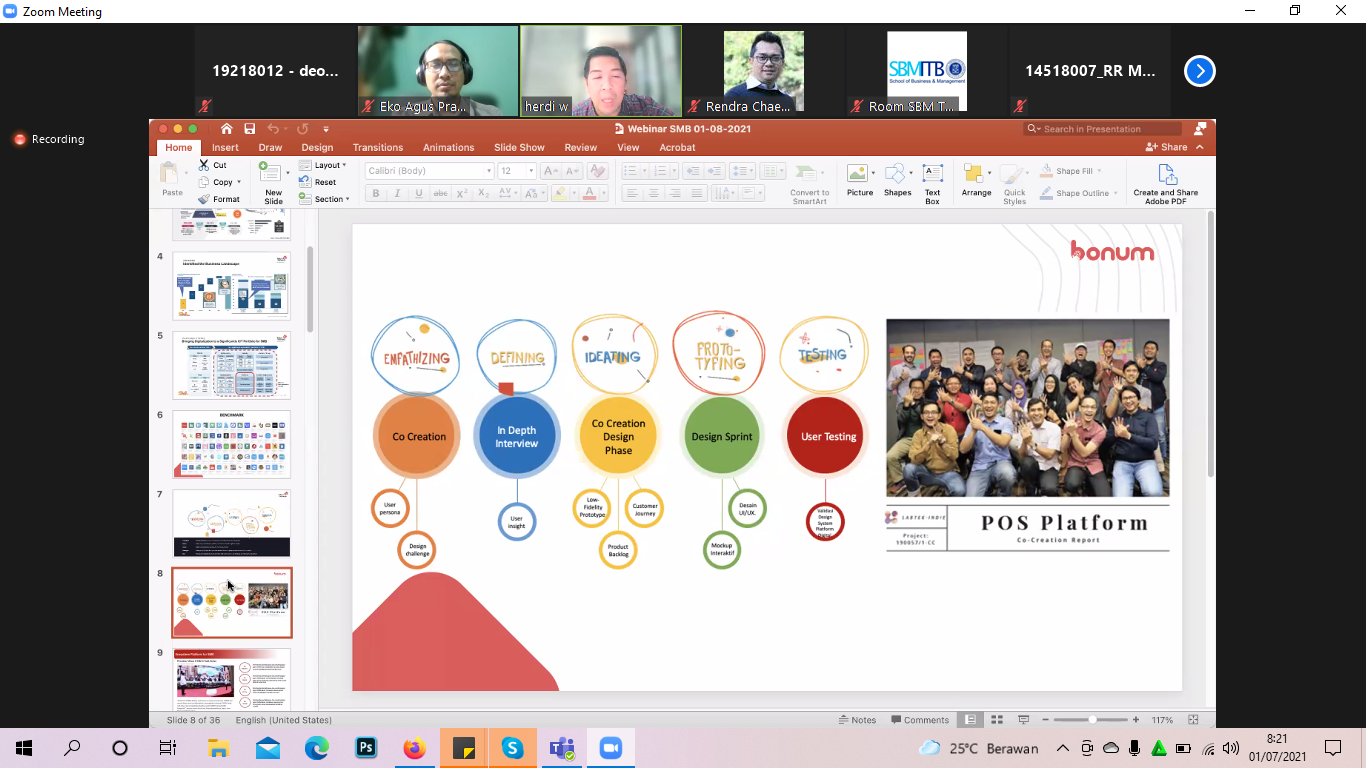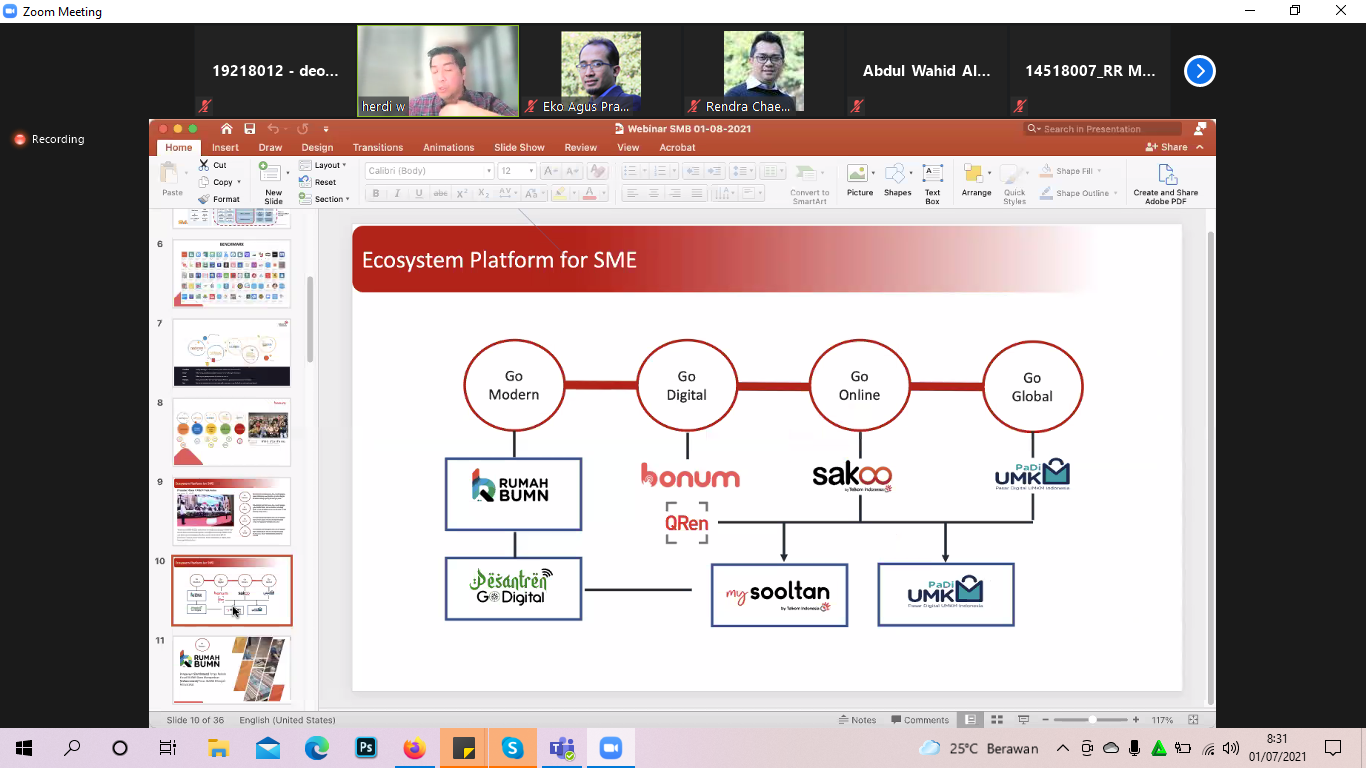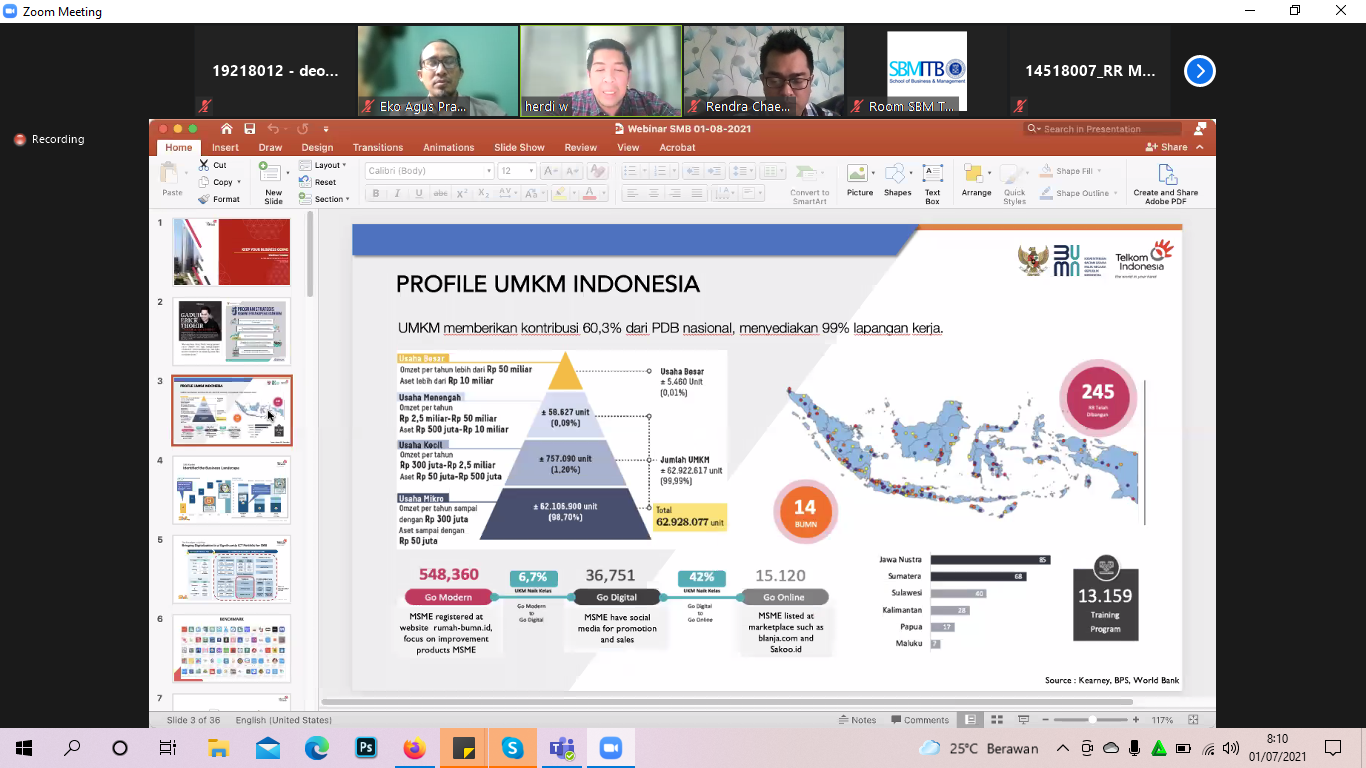 SMEs contribute 60,3 percent of the national GDP (Gross Domestic Product) and provides 99 percent employment. With such a crucial role for Indonesia’s economy, President Joko Widodo instructed the Ministry of State-Owned Enterprise (BUMN) to advancing SMEs, as mentioned by Herdi Widiantoro, the Manager Market Accelerator and GTM Strategy of PT Telkom Indonesia, in guest lecture session in service business class, SBM ITB, on Thursday (1/7/2021).
SMEs contribute 60,3 percent of the national GDP (Gross Domestic Product) and provides 99 percent employment. With such a crucial role for Indonesia’s economy, President Joko Widodo instructed the Ministry of State-Owned Enterprise (BUMN) to advancing SMEs, as mentioned by Herdi Widiantoro, the Manager Market Accelerator and GTM Strategy of PT Telkom Indonesia, in guest lecture session in service business class, SBM ITB, on Thursday (1/7/2021).
“The president wants the SMEs to be more advance; we then translate the president’s instructions into four programs,” said Herdi.

Hardi revealed some benefits of these programs for SMEs. The SMEs have access to the ministry of SOEs and the global market, coaching programs to improve product quality and working capital. Besides, the partnership between SMEs with the ministry of SOEs also enables SMEs to enter the global supply chain and improve their competitiveness globally.
Herdi continued, in implementing the programs, the ministry of SOE’s has launched some products for SMEs, such as Rumah BUMN (To foster the SMEs), Bonum (Mobile application point of sales), Qren (QR based payment), Sakoo (Digital store management), and PaDi UMKM (Marketplace for SMEs). However, after iterations and integration, the product developed into three main products: Pesantren Digital, My Sooltan, and PaDi UMKM. Herdi emphasized that these products are in line with the SMEs’ needs.
During his presentation, Hardi also explained the design thinking process that he used to develop a product fitting the SMEs’ needs. This method started by empathizing, knowing the problem faced by the users and carrying out by defining the problem (Define), creating an idea to solve the problem (ideation) and then making a prototype (Prototype) and testing its compatibility to the users, whether our solution match with their need (testing). Subsequently, this process will continue to be iterated to find the appropriate solution.





